
Jacob Kaptein and Jeffrey van Houten - Wildlife Photograhpers
Share
Jacob can you please introduce Jeffrey, and how did he get into photography?
Jeffrey has an unlimited enthusiasm about nature and photography. Since childhood he had books about how to identify birds and other species. Because Jeffrey is a natural story teller and wanted to share the nature experiences, a camera was a good solution for him.
Jeffery, can you please introduce Jacob and how did he get into photography?
Well, he was walking in the forest near by Lunteren, the city where we both lived. Roaming through the sand, into the forest and through the heather. Suddenly, he saw some mouflons with youngsters grazing around. Everybody who sees young animals falls in love with them, so did he! A good camera with tele lens is a logic consequence and his character made him more successful. He definitely keeps developing himself as a good nature photographer.
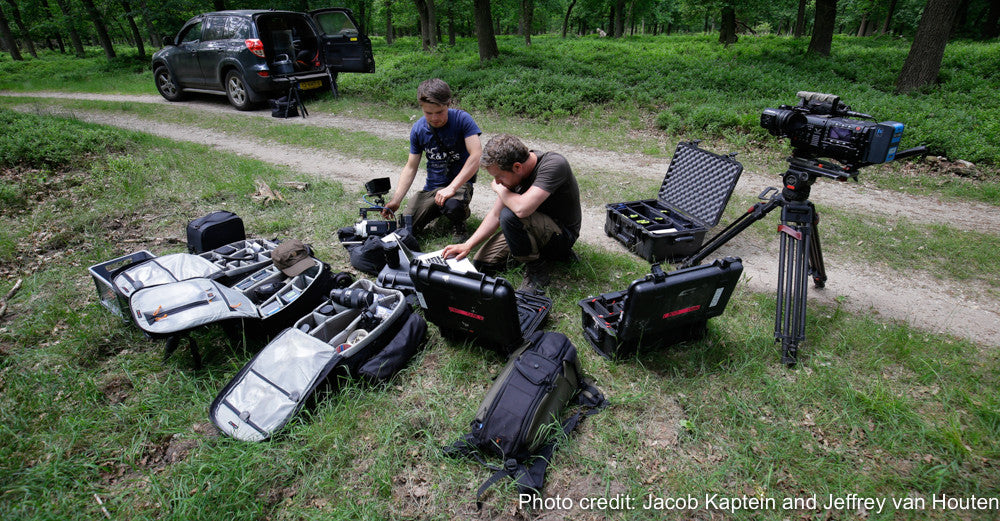
You two work well together. Is this unusual in photography?
Our collaboration is very unusual in this field. Nature photography is normally a very individualistic profession. Although it is sometimes really nice to be on your own in the nature, it is most of the times really nice to help, stimulate and accompany each other. We both offer each other interesting perspectives and critical feedback on the work we produce. In this way we think that we work much more effective. Of course it hasn't all been champagne and caviar. For example, we sometimes have to share a very small hide for photographing squirrels. When we were sitting for hours in such a small unit, I can tell you that we were going to know each other quite well. In the end the benefits are by far weighting out the minor disadvantages.
You have both achieved a lot and also won a lot of awards in the few years you have been photographers. For each of you what is your greatest achievement so far?
- Jacob has won a first prize in the National Geographic Nature Photographer of the Year Contest.
- Jeffrey has been working with the cinematic nature film in the Netherlands called: ‘The Wilde Veluwe’ which will be present in the cinema this year (2017).
When did you start taking photos?
Jacob: The really first start is when my brother got a new camera for his birthday. I was happier because of that then he, because I took the camera with me to the close by forest. Sometimes I came really close to wildlife but on my camera screen it were just little dots. That’s why I decided, around 6 years ago, to buy a second hand DSLR camera and with that decision my future was signed.
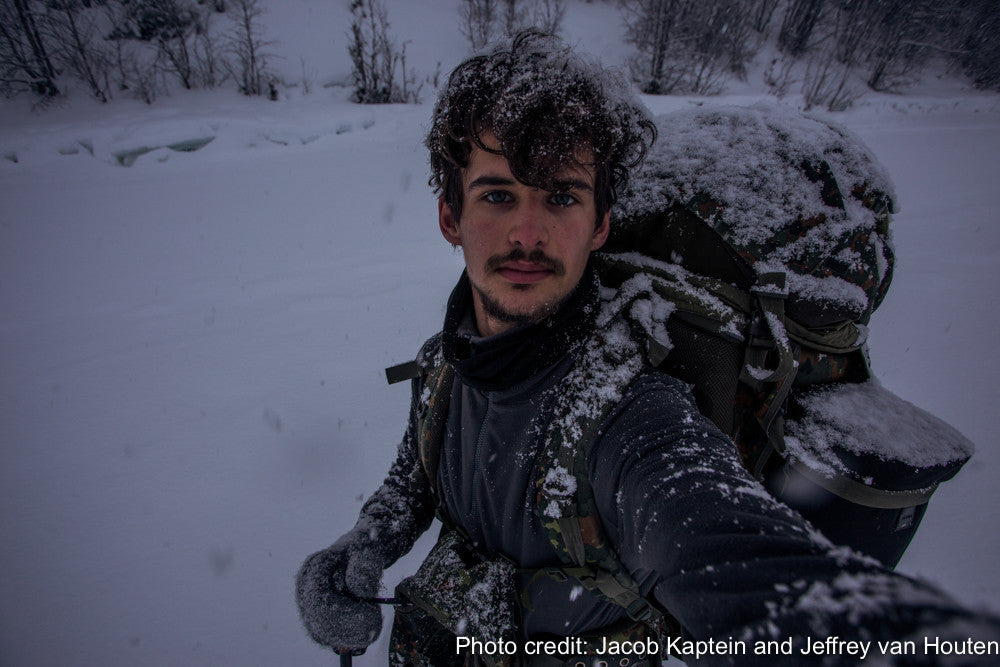
Jacob van Houten
Do you ever look back at those early photos, and what do you think?
Jacob: Yes, I do it often actually, for two reasons. The first is trivial: the photos contain nice memories about experiences I encountered in nature. The second one is more professionally. I am looking back and think: if I were again in similar conditions, what would I have done differently or the same? I take this new knowledge with me and when certain conditions are the same, I know how to react.
I was reading you moved with your parents to Lunteren, a little village in the nature reserve De Veluwe and this changed your perspective. Can you explain a little more about this?
Jacob: Before I moved to Lunteren I was living in a town surrounded by pastures, heavily impacted by farmers. For sure nature could be experienced there too, but when I suddenly was surrounded by forest, which is occupied by wild boars, roe deers, foxes and red deer, a whole new world opened in front of me.
I guess becoming a nature and wildlife photographer was a natural fit.
Jacob: Yes, for me it feels like I was predestined for taking pictures of nature, because I love nature and I love taking pictures. A better synthesis isn’t existing.
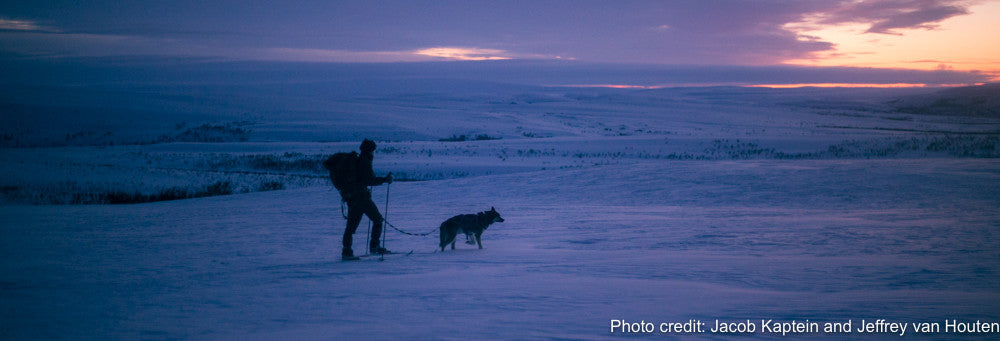
You take stunning photos. Have you formally studied photography and how much trail and error?
Jacob: It’s all trial and error. Just do it, reflect critically and above all: ‘never give up’. Besides this, all the information I needed was on the worldwide internet. And if internet couldn’t help me, Jeffrey could normally. He always knew more about technical issues than me.
A lot of your photos are underwater or are of water. What draws you to this and how did you end up doing this?
Jacob: What I like about underwater photography is that it is quite undiscovered and untouched. When I let myself down in the water and the only noises which I hear are the noises I make myself, I feel like I am in another world. With every meter I swim, I encounter new things, then I feel myself as Columbus who is exploring America.
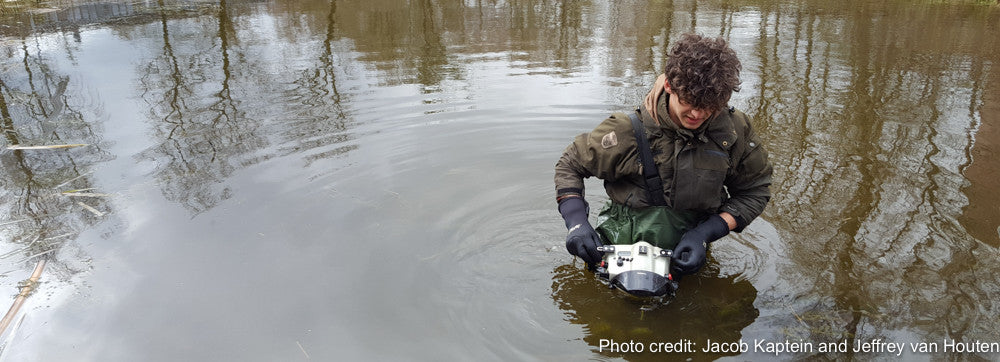 Jacob, "Many times there was a leak and as result I had to put my equipment in the rice for a few days to absorb the water out of the camera"
Jacob, "Many times there was a leak and as result I had to put my equipment in the rice for a few days to absorb the water out of the camera"
Have you destroyed any gear underwater?
Jacob: Don’t talk about it..... The biggest problem about underwater photography is that the equipment is very vulnerable. Many times there was a leak and as result I had to put my equipment in the rice for a few days to absorb the water out of the camera. One time I had taken three days for taking pictures. The first evening I fell in a stream and my camera stopped working. I went back home with no pictures at all.
You have some great photos of a very playful and mischievous looking squirrel. Is there a story about the squirrel? How long did it take for you get the great photos?
Jacob: When I first met Jeffrey he immediately told me he had a hide where many birds but also squirrels frequently were coming. I wanted to see it with my own eyes and luckily he wanted to take me to that hide. It was a really small one and after much deliberation we both fitted in the hide. I came to know that Jeffrey was totally right. There were indeed some squirrels in the area and when time was passing they became more and more used to the hide. In the end they dared to come within a distance of 1 meter.

What is the one piece of photographic equipment you never leave home without, besides the camera?
Jacob: Remote. It’s sometimes really nice to photograph animals within their landscapes. I just leave my camera on a place where I know an animal is foraging and then wait hidden away and make pictures with my remote.
What is your favourite photo, and why?
Jacob: It’s a little beech in a flooded forest which I took quite recently. I was doing a project for National Geographic and wanted to photograph the real essence of what was happening in this area. But in the end I took a photo of a simple little young beech and this photo became the central picture of the publication. What I like about this photo is that a good picture doesn’t need to include magnificent landscapes, dangerous animals or extraordinary moments, but can be simple close by subjects. You only need to give them attention.
What projects are you working on at the moment and what is next?
Jacob: I am now for half a year living in the uttermost North of Norway. I want to photograph how nature is showing its beauty here in these harsh conditions. After this half year I want to travel through Europe and create a book about that.
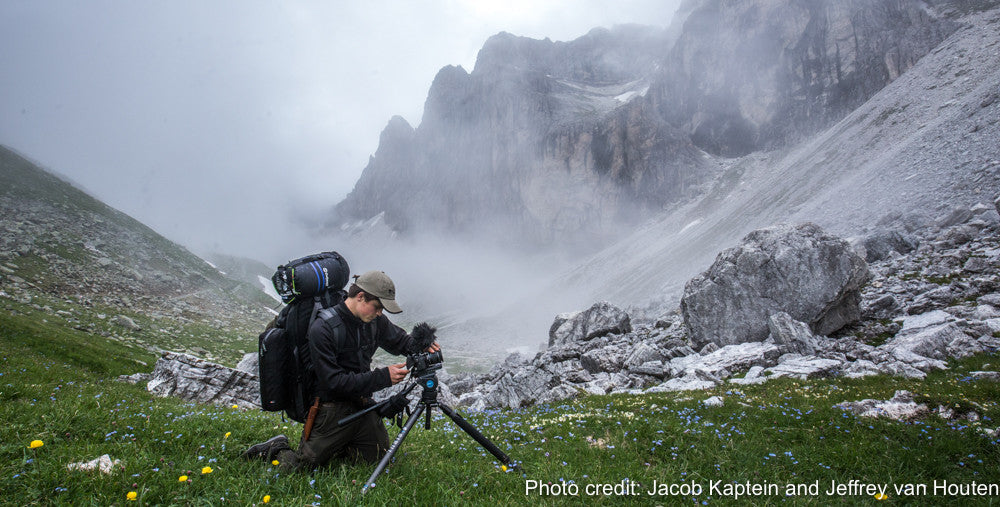 Jeffery van Houten
Jeffery van Houten
When were you introduced to photography? Are your parents photographers?
Jeffrey: I’ve been introduced into the (nature) photography when I was 11 years old. I was able to get the camera of my parents when they didn’t use it. This was one of the first digital cameras for customers with a 4 megapixel camera with 18x zoom. Amazing! I could capture what I saw in front of my eyes. I decided to save my money and spent it later to my first DSLR camera a Canon 1000D. I went to every small nature area in the neighbourhood and I used my knowledge about birds to create the pictures I want. It took less than 2 years before I was addicted to this hobby. Besides that, we moved with the family from the peatlands to the forest and the picture was complete and my love for nature and for photography won’t disappear anymore.
You recently produced a film De Dolomieten. What drew you to the Dolomites and can you share more about the project.
Jeffrey: Well, the dolomites is a place we heard about from young Italian colleagues. Jacob knew them from Facebook and after a short investigation we decided to search there for Ibex and I wrote a short script to capture the story from begin to end. The most amazing moments during the trip which I’ll never forget was the weight of the gear we wore. It was 30 kilograms per person and the climb was from 1,000 meters to 2,600 meters. The feeling when you achieve the destination is really amazing. It feels like a victory!
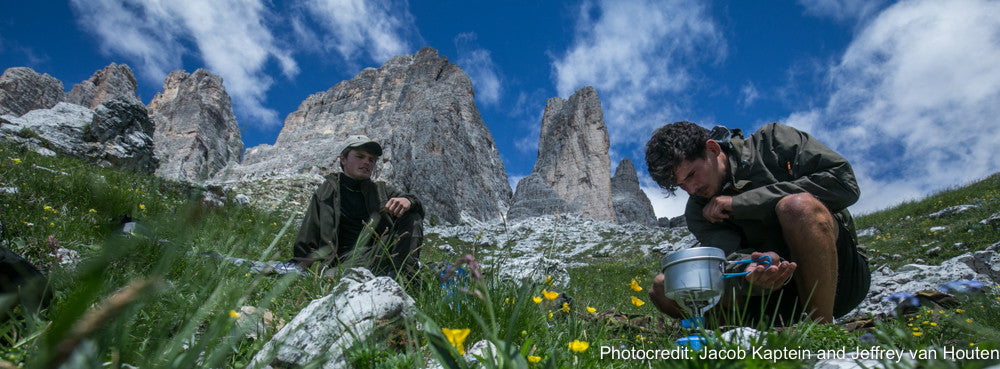
What do you prefer to work with, film or still and why?
Jeffrey: I love to take photos and making films. I want to tell stories with the images or shots that I make and I’m still working to improve the skills needed for telling a story. Think about writing, talking, good still and videos, capture emotions and so on. In summary, it is the art of watching the beauty around you with an endless way for improving your own observations.
Where is the most interesting and unique place you have taken visited?
Jeffrey: That was Ethiopia, the first-time Africa. The differences between people, culture and surrounding, but you still share the same love for you family and enjoy the nature around your living place. You still are going to get some food from the market and searching for a comfortable live. I asked myself how big the earth actually is… well, I’ve still no answers, but I want to investigate this in the future!
If you had to choose one photo, what is your favourite?
Jeffrey: My favourite photo is showing a wild boar with her family. The mother watches a youngster straight into the eyes and the photo was taken at sunset. I was waiting in a hide for weeks and I’ve been there for hours with this amazing present! It shows the emotion I saw all the time and I never captured this moment before. Hmmm, what is nature photography wonderful when you are in the presence of such intimate moments.
What is the one piece of photographic equipment you never leave home without, besides the camera?
Jeffrey: The focal length 35mm and 50mm (on fullframe sensor). Because these focal lengths give the feeling you are really close of what’s happening in the shot without much shortcomings from the lenses (mainly distortion). Good for story telling!
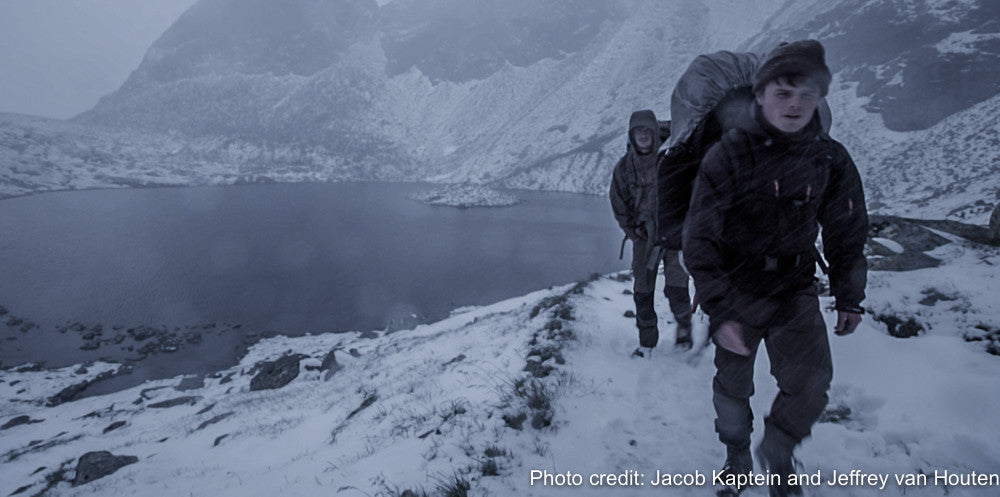
What photographers from the past have influenced your work?
Jeffrey: Too many to tell. In particular, the photographers of the Marius van der Sandt Academy (Jan Vermeer, Jasper Doest, Joris van Alphen, Theo Bosboom and Bas Meelker) and Jacob Kaptein, Dick Harrewijn, Jan van der Greef and so many more photographers.
What projects are you working on at the moment?
Jeffrey: I’m working on a story about Geese for National Geographic NL-BE. This chance is created by the Marius van der Sandt Academy (www.mvdss.nl) with is supported by really good and professional Dutch nature photographers mentioned above. Besides that, I’m still working on small scenes for the cinema film called ‘De Wilde Veluwe’.
Jacob and Jeffery
Where are you off to next?
Jeffery: I’m going to visit Jacob in the summer where he is studying right now. But we don’t have a concrete plan. We will definitely enjoy our trip and share the results on our social media accounts! Can’t wait for it.
As a nature and wildlife photographer, where is the one place in the world you would like to go to take photos and why?
Finland!! Because we love the silence, the structures, the landscapes and the mammals. They have bears, wolves and wolverines. Besides that, there are amazing places on the earth think about South-Africa, India, Madagascar, Philippines, Tasmania, tropical rainforest in Brazil and the astonishing landscapes in America like Rocky Mountain National Park. We cannot wait to discover more and more from the world!

When you are away from home, or sitting in the cold waiting for the perfect moment, what is your favourite comfort food?
Chocolate, definitely. We love chocolate and especially in cold conditions where we have to make a lot of effort the moments of eating chocolate are blessed moments. And at the second place: when we were sitting in a hide, Jeffrey brought always warm tea with him. That was awesome, because then we became warmed up from within.
What advice do you have to other young photographers as they start their creative journey?
We are always a bit critical about advice. If you really have the passion to make better photos you will learn it yourself, we think. The most important thing is to keep practising. Be outdoors, and wait as long there till you are satisfied. When you find a subject to photograph, be really critical to the picture you are making. Try every angle, exposure, perspective and light condition till you are sure you have made the best picture that was possible in those conditions. So the most important thing is: give room to your passion: go into nature and give freedom to your creativity.
Where can we learn more:
JEFFREY
Website www.jeffphotography.nl/
Facebook www.facebook.com/jeffphoto96 or www.facebook.com/jeffreyvhouten
Instagram https://www.instagram.com/jeffreyvhouten96/
JACOB:
Website: www.jacobkaptein.nl
Facebook: https://www.facebook.com/jacobkaptein.nl
Instagram: https://www.instagram.com/jacobkaptein/



